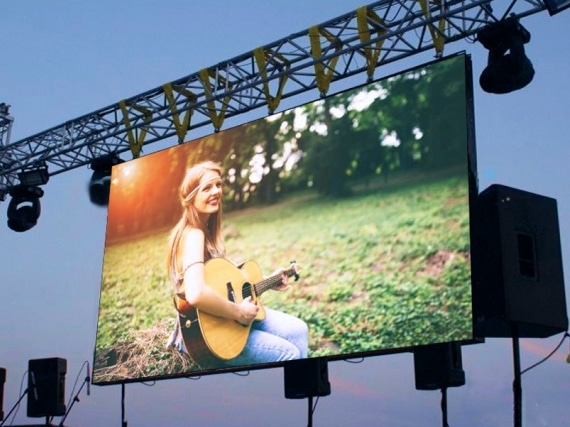
A common type of LED display wall technology is the direct view LED. Such solution uses individual Light Emitting Diode modules that are arranged closely together to form a big screen. Directly viewed LED screens are recognized for their high brightness as well as lively hues, making them ideal for external activities or brightly lit settings. These displays also have a wide viewing angle, allowing indicating that people can see the screen distinctly from different positions. Such renders direct view LED screens a favored option for stadiums and outdoor events.
A different type of LED video screen solution is the LED illuminated LCD. This technology merges conventional Liquid Crystal Display screens with LED illumination for improved luminosity and color accuracy. LED illuminated LCDs are commonly utilized in interior settings, such as shopping malls as well as conference rooms. They provide superior visual clarity while are generally more affordable than directly viewed LED walls. However, they may not perform as effectively click here to read in well-lit settings, since the illumination can sometimes wash out the colors.
A thirdly option is the OLED video wall. OLED technology offers exceptional differentiation as well as hue richness in relation to alternative kinds of displays. Each pixel in an OLED display produces its individual luminescence, enabling for genuine dark tones as well as lively hues. Such renders Organic Light Emitting Diode display screens especially attractive for uses which demand premium images, including gallery galleries or high-end retail stores. However, OLED technology can be costlier expensive and may not be as bright as direct view LED walls, making it less suitable for outdoor use.
In addition to the aforementioned options, various also various applications for LED display screens. These displays can be used for advertising, amusement, as well as information display. For example, companies often use LED display screens for electronic signage to attract clients as well as promote products. Within amusement, they enhance the visual experience at concerts and gatherings, offering dynamic backgrounds as well as engaging visuals. Within business settings, LED video screens can be utilized for presentations, video meetings, and educational programs, helping to convey data in a visually attractive way.
In conclusion, LED video screens are available in different technologies, every having its unique benefits and uses. Directly viewed LED screens are ideal for outdoor applications, whereas LED-backlit Liquid Crystal Displays are more appropriate for indoor settings. OLED display screens offer exceptional image clarity but may be at a greater cost. Grasping the differences differences can assist organizations make knowledgeable decisions about the best type of Light Emitting Diode display screen best satisfies their needs, whether it be for promotion, entertainment, and corporate use.